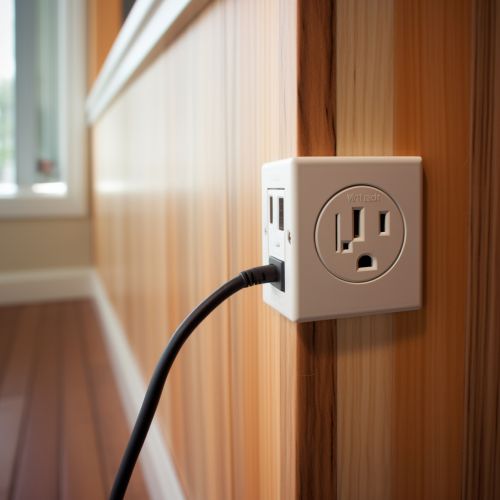Electric Vehicle Supply Equipment
Overview
Electric Vehicle Supply Equipment (EVSE) refers to the hardware and software systems required to deliver and manage the electrical energy transfer between the grid and an electric vehicle (EV). This includes the physical connection equipment, safety systems, information systems, and energy management systems. EVSE is an essential component of the electric vehicle ecosystem, enabling the charging of electric vehicles in various settings, including homes, workplaces, and public charging stations.
Types of EVSE
There are three primary types of EVSE: Level 1, Level 2, and DC Fast Charging. Each type represents a different level of power delivery and thus, charging speed.
Level 1 Charging


Level 1 charging utilizes a standard 120-volt AC household outlet. This is the simplest and slowest form of EV charging, typically providing about 2 to 5 miles of range per hour of charging. Level 1 charging equipment is often included with the purchase of an EV and requires no special installation beyond a grounded electrical outlet.
Level 2 Charging
Level 2 charging requires a 240-volt AC circuit, similar to what is used for heavy appliances like clothes dryers or electric stoves. This type of charging can deliver between 10 to 60 miles of range per hour, depending on the specific capacity of the equipment and the vehicle. Level 2 equipment is commonly used for both home and public charging.
DC Fast Charging
DC Fast Charging, also known as Level 3 charging, delivers direct current (DC) power to the vehicle, enabling rapid charging rates. These systems can typically deliver 60 to 100 miles of range in just 20 minutes of charging. Due to their high power requirements, DC fast chargers are primarily used in commercial and public settings.
Safety Systems
EVSE includes a range of safety systems designed to protect the user, the vehicle, and the electrical grid. These include ground fault protection, which prevents electrical shocks, and communication systems that ensure the vehicle and the EVSE are properly connected before charging begins. Additionally, most EVSE includes thermal sensors to prevent overheating, and circuit protection to prevent electrical overloads.
Information Systems
Information systems in EVSE provide the user with important data about the charging process, such as the current charging rate, the amount of energy delivered, and the estimated time to full charge. These systems can also provide remote monitoring and control capabilities, allowing users to start, stop, or schedule charging sessions via smartphone apps or web interfaces.
Energy Management Systems
Energy management systems in EVSE allow for the optimization of energy use during charging. These systems can adjust the charging rate based on various factors, such as the current demand on the electrical grid, the time of day, and the vehicle's battery state of charge. Some advanced energy management systems can also integrate with renewable energy sources, such as solar panels, to maximize the use of clean energy in EV charging.
Standards and Protocols
There are several standards and protocols that govern the design and operation of EVSE. These include the SAE J1772 standard for Level 1 and Level 2 charging connectors in North America, and the IEC 62196 standard used in Europe and other regions. For DC Fast Charging, there are multiple competing standards, including CHAdeMO, SAE Combo (also known as CCS), and Tesla's proprietary Supercharger standard.
Market and Industry Trends
The EVSE market is expected to grow significantly in the coming years, driven by the increasing adoption of electric vehicles. Key trends in the industry include the development of faster charging technologies, the integration of smart grid technologies, and the expansion of public charging infrastructure. Additionally, there is a growing focus on improving the user experience of EV charging, including reducing charging times, providing more convenient payment options, and offering amenities at charging stations.
